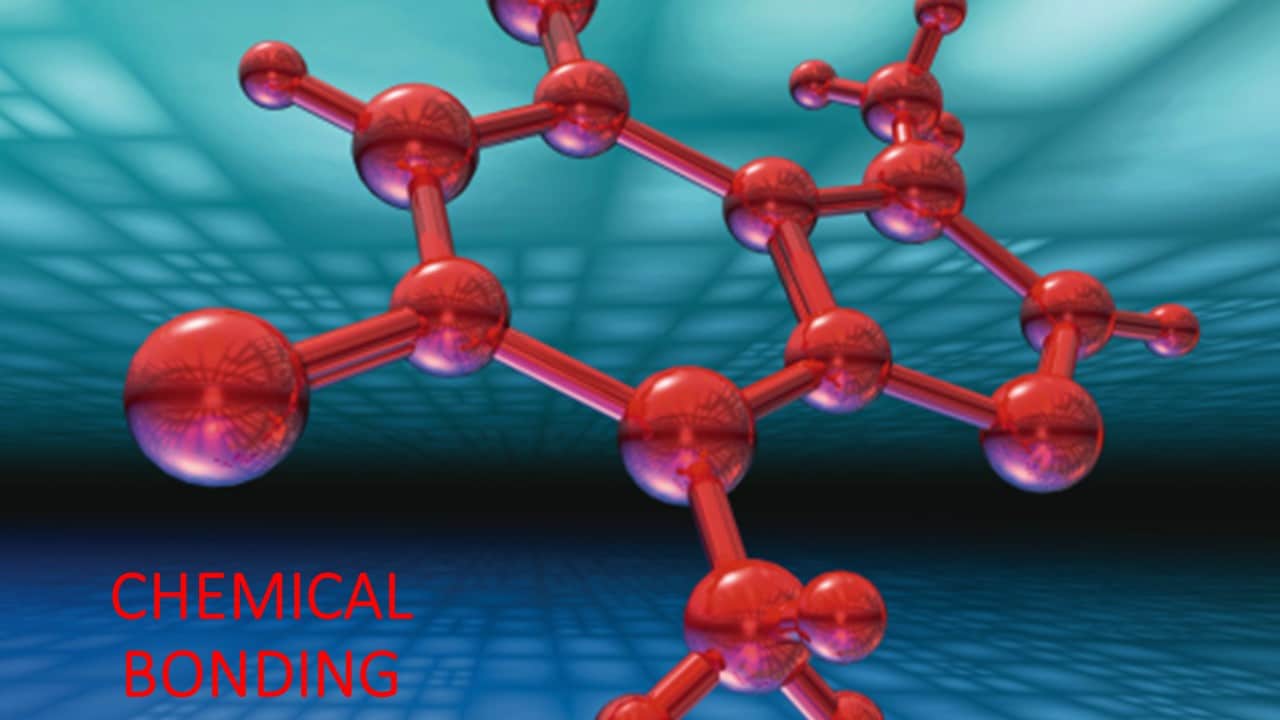STD X – CHEMICAL BONDING – EINSTEIN
About Course
In this section will learn the following chapters:
1.Introduction,Types of chemical bonds, electrovalent bond
2.Covalent Bond, polar convalent compounds
3.properties and comparsion electrovalent and covalent bond
4.Co-ordinate Bonding
Last Updated:December 21, 2023
0 (0 Ratings)
Share Course
Page Link
Share on social media

Description
Introduction
A chemical bond is a lasting attraction between atoms, ions or molecules that enables the formation of chemical compounds. The bond may result from the electrostatic force of attraction between oppositely charged ions as in ionic bonds or through the sharing of electrons as in covalent bonds.
Electrovalent Bond
The concept of chemical bonding was recognised as early as the 12th century that ‘certain types of chemical species were joined by a type of chemical affinity’.
It was only in 1704 that the concept was firmly established by Sir Isaac Newton, when he published the atomic bonding theory. Newton in his statement said, that “particles attract one another by some force, which in immediate contact is exceedingly strong, at small distances performs the chemical operations, and reaches not far from the particles with any sensible effect.”
A chemical Bond is thus defined as the force of attraction that holds various constituents like atoms, ions etc. together. The three main types of bonds that are formed are:
Ionic or electrovalent bonds
Covalent bonds
Co-ordinate covalent or dative bonds
Ionic or Electrovalent Bond
Ionic bonding is the complete transfer of valence electron between atoms. Ionic bonds occur between metals (electron donors) and non-metals (electron acceptors) because of the electrostatic force of attraction between positive and negative ions.
Ionic or electrovalent bonds are formed under the conditions of low ionization energy, high electron affinity and high lattice energy.
Covalent bond
Covalent bonds are formed between two or more atoms when they share electrons. They are normally formed between atoms of similar electronegativity and may occur between atoms of same or of different kind.
Co-ordinate Bond or Dative Bond
A coordinate covalent bond also known as a dative bond or coordinate bond is a type of covalent bond in which the two-shared electrons are supplied by the same atom.
It is formed by two atoms sharing a pair of electrons where one of the atoms has a lone pair of electrons. The electrons are attracted to both the nuclei. The atom which supplies both the electrons is called donor and the other atom is called acceptor.
A lone pair is a valence electron pair without bonding or sharing with other atoms. They are found in the outermost electron shell of an atom.
Free
Free
Free access this course
-
LevelIntermediate
-
Total Enrolled6
-
Last UpdatedDecember 21, 2023
Hi, Welcome back!
Material Includes
- 🔥 Live Interactive classes with in-class doubt solving
- ⭐ Weekly Test and Quiz with instant tracking for progress
- ⚙️ Revision of the course after testing
- 👋 Fortnightly Parents and Tutor interactions
- 🌷 Expert monitoring of student's learning progress
- 👨👩👧👧 Daily communication over call, whatsapp and mail
- 💻3 hours on-demand video
- ✍4 downloadable resources
- ⌛Access for entire Academic Year
- 📱Access on mobile and Desktop
- 📋Assignments and review of the same
- 💡Tests and Correction by Board paper checkers
- 🏅Certificate of completion and Live tracking with Grade book
Course Duration:
0
Course level:Intermediate
Enrolled:6
About Course
In this section will learn the following chapters:
1.Introduction,Types of chemical bonds, electrovalent bond
2.Covalent Bond, polar convalent compounds
3.properties and comparsion electrovalent and covalent bond
4.Co-ordinate Bonding
Course Curriculum
CHEMICAL BONDIND – 29 – MARCH 2023 – ELECTROVALENT AND COVALENT BONDS
-
CHEMICAL BONDING – PHYSICAL CLASS – ELECTRON DOT STRUCTURE OF COVALENT COMPOUNDS
06:46 -
CHEMICAL BONDING – PHYSICAL CLASS – ELECTRON DOT STRUCTURE OF ELECTROVALENT COMPOUNDS
09:41 -
ELECTROVALENT BONDING – CORE CONCEPT – CHEMICAL BONDING
13:20 -
ELECTROVALENT BONDING – CORE CONCEPT – INTRODUCTION TO CHEMICAL BOND
07:38 -
ELECTROVALENT BONDING – CORE CONCEPT – INTRODUCTION
15:03 -
ELECTROVALENT BONDING – SUPPORT MATERIAL – POSTULATES AND INTRODUCTION
01:36 -
ELECTROVALENT BONDING – CORE CONCEPT – ELECTROVALENT OR IONIC BOND
17:56 -
CHEMICAL BONDING – PHYSICAL CLASS – CONCEPT OF IONIZATION OF POLAR COVALENT COMPOUNDS
06:58 -
ELECTROVALENT BONDING – SUPPORT MATERIAL – ELECTROVALENT OR IONIC BOND
01:57 -
CHEMICAL BONDING – PHYSICAL CLASS – CONCEPT OF POLARITY IN COVALENT BONDS
13:59 -
CHEMICAL BONDING – PHYSICAL CLASS – COMPARISON OF PROPERTIES OF ELECTROVALENT AND COVALENT
23:05
CHEMICAL BONDIND – 30 – MARCH 2023 – FORMATION OF COVALENT BONDS
-
COVALENT BOND – CORE CONCEPT – COVALENT BOND
09:04 -
COVALENT BOND – CORE CONCEPT – SINGLE COVALENT BOND
07:06 -
COVALENT BOND – CORE CONCEPT – COVALENT BOND – ELECTRON-DOT
37:31 -
CHEMICAL BONDING – PHYSICAL CLASS – ELECTRON DOT STRUCTURE OF ELECTROVALENT COMPOUNDS
09:41 -
CHEMICAL BONDING – PHYSICAL CLASS – CONCEPT OF POLARITY IN COVALENT BONDS
13:59 -
CHEMICAL BONDING – PHYSICAL CLASS – CONCEPT OF IONIZATION OF POLAR COVALENT COMPOUNDS
06:59 -
CHEMICAL BONDING – PHYSICAL CLASS – FORMATION OF COORDIANTE BONDS
10:11 -
CHEMICAL BONDING – PHYSICAL CLASS – REDOX
11:01 -
CHEMICAL BONDING – PHYSICAL CLASS – FORMATION OF HYDROXYL ION AND SELF IONIZATION OF WATER
10:11 -
CHEMICAL BONDING – PHYSICAL CLASS – COMPARISON OF PROPERTIES OF ELECTROVALENT AND COVALEN
07:29 -
CHEMICAL BONDING – PHYSICAL CLASS – FORMATION OF AMMONIA
16:55 -
COVALENT BOND – SUPPORT MATERIAL – COVALENT BOND
01:13 -
CHEMICAL BONDING – PHYSICAL CLASS – FORMATIONOF SELF IONIAZATION WATER
16:21
CO – ORDINATE BONDING
-
CO – ORDINATE BONDING – CORE CONCEPT – POLAR COVALENT BOND
11:53 -
CO – ORDINATE BONDING – CORE CONCEPT – COORDINATE BOND AND HYDRONIUM ION
21:09 -
CHEMICAL BONDING – CORE CONCEPT – COVALENT BOND AND COORDINATE BOND FORMATION
22:24
Student Ratings & Reviews

No Review Yet

